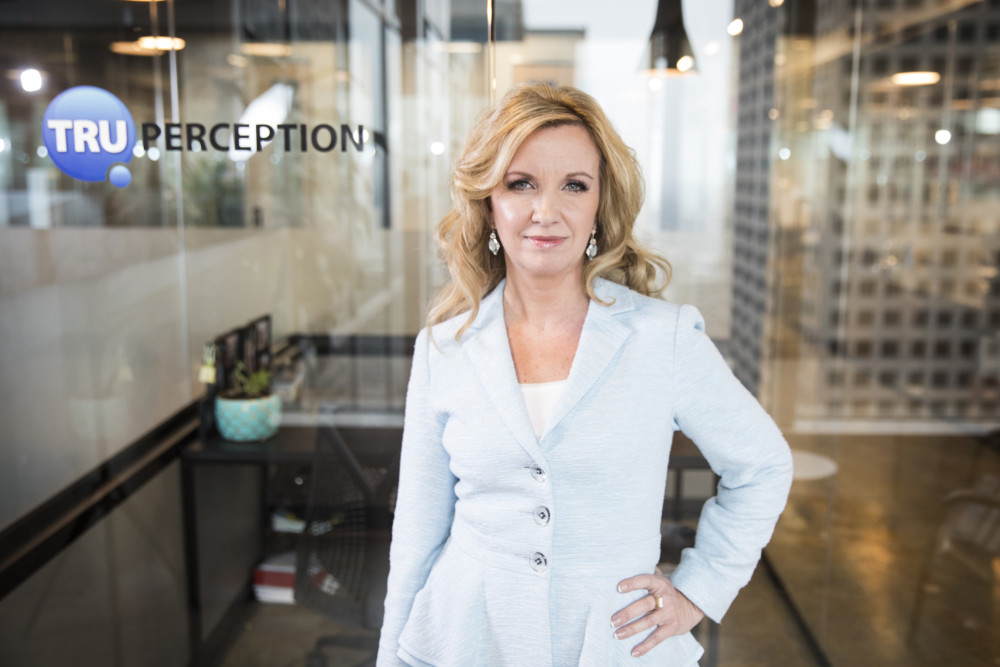By Evan Ramstad
Star Tribune (Minneapolis)
WWR Article Summary (tl;dr) Melissa DeLay helps executives communicate better. From social media to powerpoint presentations, DeLay shares her tips on how to communicate in an authentic, professional way.
MINNEAPOLIS
At a recent workshop she led for a senior business executive and his direct staff, Melissa DeLay gave her standard admonition not to shout or use foul language when talking with colleagues. “What if the business is on fire?” the executive asked. No, she replied, not unless it is literally on fire. “If your room is in flames, you may slam your fist and yell at your employees and they will thank you for the rest of their lives that you just saved them,” DeLay told him.
For five years, DeLay, of Minneapolis-based TruPerception, has helped executives communicate better. She guides them through conflicting forces: the demands for authenticity, sensitivities around race and gender, reflexive overpromising in good times and clamming up in bad, the perils of social media, and of PowerPoint.
Q: You’ve worked at big companies, including Maytag, 3M and Carlson. How did you decide to start your own consulting firm?
A: I got to a point where I only wanted to work with leaders who would listen. And you can’t have that inside a company. Some will listen and some won’t. I knew I could help more people if I was on my own because I would only be working with people who wanted my help.
Q: Did you have a reputation around the Twin Cities that helped you get clients when you started?
A: I was very hidden, very behind the scenes. What happened is I left one company to go to another. And one of the leaders at the former company messaged me to ask ‘Can you still help me?’ That’s when I realized there was an opportunity. To the first person who asked me that, I said, ‘Is this a favor or billable?’ And he said, ‘Oh, I guess I never thought about it.’ A favor is, over coffee, I’ll answer a couple questions. But if you need me to write your PowerPoint or coach you on how to deliver, that would be billable.
Q: How did you develop the business?
A: I knew the value I could bring to companies. And I had the benefit of hiring people like me (in previous jobs), so I knew what leaders would be willing to pay.
This was 2011, around the beginning of LinkedIn, the beginning of personal branding. I was able to embrace that. At the start, 90 percent of my clients were female.
My target market was CEOs, but in the first year, any new business will stay closest to the dollar. When somebody wants to hire you, you say ‘Absolutely.’ … My key audience is executives, male and female, in their mid-50s to low 60s, who are running companies. By my third year in business, I was back with the market I know the best.
Q: What is your opportunity?
A: Leaders’ mind-sets have never really changed when it comes to communication. They overcommunicate when times are good. They gush and say how wonderful everything is and you should be here as an employee forever. And they create this myth that loyalty is strong and everything is always going to be wonderful.
And as soon as something changes in the economy or business, leaders stop talking. They clam up out of fear. They think, what if I say the wrong thing or instill fear in people? What they don’t realize is they are doing that anyway.
Q: Isn’t communication a basic skill everyone has?
A: As a culture, we say we value communication. But when you ask people, what are you doing right now or what have you done in the last 30 days to improve your communication, they can’t give you an answer. They say that it’s valuable but they believe that it’s an art or a mystery. You’re either born to be a great communicator or you’re not.
But it’s very scientific. Word choice. Word order. Whether you’re standing or sitting, how you use your mannerisms, your facial expressions. There are dos and don’ts within communication. Anyone can learn how to communicate better. They do have to have help from someone like me, I believe, because intuition is usually wrong.
Q: What do you tell clients about social media and other new tools to talk to employees and clients?
A: We all as a society, especially executives, focus on vehicle. Are we going to send an email or are we going to have a video or are we going to talk? And the vehicle is the least of your worries. What are you saying and how are you trying to influence change in perception or change in behavior? Let’s get that ironed out and then the vehicle is the easy part. What I want leaders to be aware of is that there is a method that will protect them from disaster. And that is to spill the truth, to be as transparent as possible, to do so in a considerate way, and be objective and take in both sides of the story.
Q: In the big picture, what would you like to fix?
A: We once had pretty high standards in professionalism and etiquette for our speaking and writing. PowerPoint had a huge impact on that. Once we got that crutch, we didn’t adhere to any of the basic communication principles that we once found so necessary.
There’s almost this bullying to be more informal, more off the cuff (in business settings). Most people can’t be off the cuff. The right behavior isn’t modeled. The standard has been significantly lowered. And we have become numb to the power of our words and the power of our communication.
I want to bring back decorum that we lost.














































































































































































































































































































































































